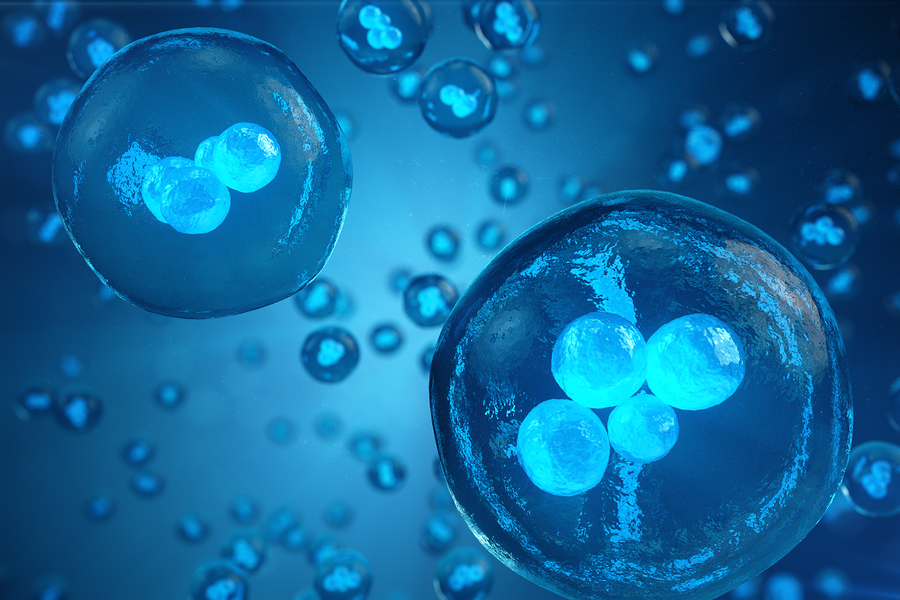Preimplantation genetic testing (PGT) is a process chosen by some individuals and couples at risk for passing on a genetic disease. Embryo cryopreservation, also known as freezing embryos, is a necessary part of the PGT process since it takes a few weeks to receive the genetic test results of each embryo.
If you’re considering PGT, but are not yet ready to start a family, egg or embryo freezing are worthwhile options to consider. What do you need to know about the differences between them, and why choose one over the other?
Egg Freezing
Egg freezing techniques have improved significantly in the past few years, but an egg—one large cell, the largest in the female human body—is still more difficult to freeze than an embryo. “Social egg freezing” is growing in popularity among women who might anticipate becoming pregnant at an advanced age. As women age, the number of chromosomally normal eggs, as well as the total number of eggs available to be fertilized, declines. “If you are younger and don’t yet have a partner, you may wish to consider freezing your eggs,” says Alison Coates, PhD, Embryology Laboratory Director at Oregon Reproductive Medicine. “The best age to do it for maximum success is when you’re in your early thirties.”
It is not currently possible to perform specific genetic testing (as is done with embryos in PGT for single gene disorders) nor chromosomal analysis (as in PGT for aneuploidy) on a single egg cell without destroying the cell in the process. However, egg cryopreservation for younger women who don’t want to pass on a genetic disorder is still a good option, because it maximizes the chance of having embryos with normal PGT results down the road, and therefore may improve the chance of having a healthy baby.
Vitrification, a flash freezing technique, has significantly improved the survival for egg cells over the past several years. But an egg is still more difficult to freeze than an embryo. “You have to be able to freeze and thaw that one cell and have it survive,” says Coates. “The egg cell is made mostly of water, so ice crystals can form in the cell itself, and when the egg thaws, ice crystals can damage the cell wall and cause the cell to die.” Since an egg is only one cell, if this happens, it won’t survive the thawing process. Current technology leads to a roughly 85 percent survival rate for thawed eggs.
Embryo Freezing
If you already have a partner, but are not yet ready to start your family, embryo freezing may be a better choice for you, since the success rate is higher.
The same vitrification technique used for egg freezing is also used for embryo cryopreservation. “Freezing embryos has a higher success rate than egg freezing,” says Coates. “Compared to the one cell of the egg, an embryo has more cells, so if you lose one cell in the freezing and thawing process, it doesn’t matter, because the embryo can regenerate. Also, each cell is a lot smaller [than an egg cell], so it’s easier to freeze them.”
If you’re interested in having the embryos tested with PGT, you can have the embryos biopsied and sent to a laboratory for testing. With this step, you will know which embryos do not have the genetic disorder and are chromosomally normal, well before they’re ready for implantation in the future.
Both eggs and embryos can be frozen indefinitely—at least theoretically, says Coates. There is no time limit. Once frozen in liquid nitrogen, the eggs and/or embryos are maintained at that temperature with multiple backup systems and monitoring to keep them safely frozen.
Patients pay a monthly or annual storage fee for their embryos, so they typically choose not to continue to cryopreserve embryos that are chromosomally abnormal, since they are unlikely to result in a viable pregnancy. While it would be ideal to have a few embryos to choose from that are both chromosomally normal and free from the genetic disease tested via PGT, Coates advises potential parents not to count on having a certain number of embryos available for implantation. Couples often assume they will have extra embryos from the process in case they want to have more than one child or implantation doesn’t result in a pregnancy on the first attempt, but this may not be the case. While it is good to remain optimistic, ultimately, success will depend on how many embryos are created during the process (a number very unique to each individual couple), and how many of those embryos are both chromosomally normal and unaffected by the genetic disorder.
Don’t Wait
Coates’ best advice for people considering IVF with PGT and/or egg freezing is not to wait. “The older we get, the more difficult it can be to find the normal embryo that’s going to make the baby,” she explains. “Do it as soon as you can.” If you already have your partner, that may mean going through IVF with PGT, then storing the resulting unaffected embryos. If you don’t yet have a partner but know you want to do PGT in the future to prevent a genetic disorder from being passed on, you may want to consider freezing your eggs to use in the IVF/PGT process later.

Lauren Arcuri is a freelance writer in northern Vermont. She writes about science, health, and medicine, including genomics, neuroscience, and rare diseases. She has written for Pacific Standard, Proto, Genome, Yoga Journal, and many other publications.
